| Article ID | Journal | Published Year | Pages | File Type |
|---|---|---|---|---|
| 3877735 | The Journal of Urology | 2005 | 6 Pages |
ABSTRACTPurpose:Previous studies have shown that serum levels of the degradation products of cytokeratins could be used as surrogate markers in the diagnosis and followup of patients with solid tumors, including tumors of the bladder.Materials and Methods:The soluble cytokeratin 19 fragment CYFRA 21–1 was measured by solid phase radioimmunoassay in the serum of 142 patients with invasive transitional cell cancer of the bladder. Of the patients 56 had clinical stage I to III locally confined disease (T1–4aN0M0) and 86 had stage IV metastatic disease with lymph node and/or distant metastases. A control group consisted of 33 healthy volunteers. In a subgroup of 49 patients with metastatic disease receiving combined platinum based chemotherapy serum CYFRA 21–1 was determined prior to the initiation of therapy and after the documentation of response.Results:Abnormal CYFRA 21–1 was observed in 7% of patients with locally invasive disease and in 66% of those with metastatic disease (p <0.0001). There was no correlation of CYFRA 21–1 with tumor differentiation. Patients with abnormal CYFRA 21–1 showed statistically significant worse median overall survival. Moreover, in the subgroup of patients with metastatic disease receiving chemotherapy CYFRA 21–1 levels correlated with the response to treatment.Conclusions:Patients with transitional cell cancer of the bladder with evidence of distant metastases showed a significant increase in serum CYFRA 21–1. During chemotherapy CYFRA 21–1 appears to be a potentially sensitive and useful indicator for monitoring treatment response.
